Baarle-Nassau/Baarle-Hertog
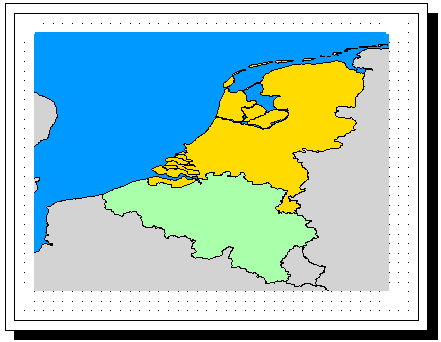
The Netherlands is here shown in yellow. Belgium is shown in green.
What
follows is a larger-scale image of the southern border of the Netherlands
and of the
northern border of Belgium:
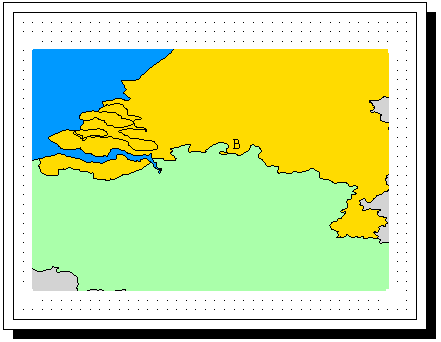
This border was established as part of the Treaty of Maastricht in 1843
(see below).
In the area round Baarle (marked B in the above) it proved impossible
to come
to a definitive agreement. In place of a fixed border (between border
posts
214 and 215) each of 5732 parcels of land had their nationality
laid down
separately. A portion of these parcels form together the space of
20 Belgian
exclaves (today's Baarle-Hertog) lying spread around within the
territory of the
Dutch Baarle-Nassau and separated by 5 kilometers from the Belgian
motherland:
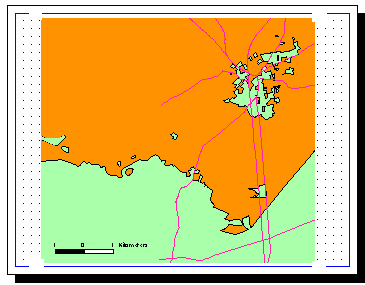
The orange portions are part of the national territory of the Netherlands.
The green portions, which constitute what we might think of as
an
inland archipelago, are part of Belgium.
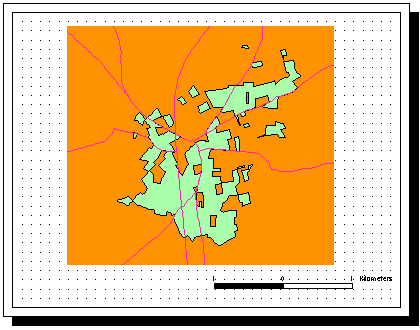
Orange portions within green portions represent exclaves of the Netherlands
completely surrounded by Belgian territory which are in turn completely
surrounded by the territory of the Netherlands:
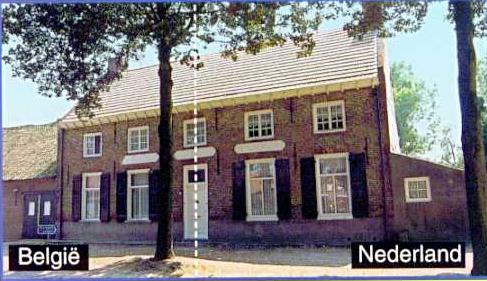
The Story of Baarle
(with thanks to K. A. H. W. Leenders
and Brendan Whyte)
History has left a territory composed of two municipalities, whose shape
is unique, belonging partly to the Netherlands and partly to Belgium. Earlier
both parts belonged to the former Duchy of Brabant, a territory that is
now split up into the Dutch province of Noord-Brabant (including Baarle-Nassau)
and the Belgian provinces of Antwerp (which includes Baarle-Hertog), Vlaams
Brabant, Brussels and Brabant-Wallon. People are quite comfortable with
this situation, even though it raises so many complicated and difficult
problems that even the most brilliant jurists are puzzled. Baarle-Hertog
is called on older Belgian maps Barle-Duc (Hertog = Duke, fr: duc) and must
not be confused with the prefectoral town of Bar-le-Duc, Meuse, France.
Origin of the situation
The year of Baarle's founding is not known precisely. The name appears
for the first time in 992, in a "false charter", when Countess Hilsondis,
the wife of Ansfried, donates her properties, including Baarle, to the abbey
of Thorn in the Dutch province of Limburg.
At the end of the 12th century, Godfried of Schoten, the Lord (Sieur, Seigneur)
of Breda, owned Breda Castle and the territory around the castle extending
to the east and north. His ancestors had bought the territory (as a perpetual
and free land ownership) from the ancestors of Hendrik I, the Duke of Brabant.
In those days, however, many a dispute concerning the ownership of the land
divided the Duke of Brabant and Dirk VII, the Count of Holland. Probably
in response to threats, Godfried gave the territory to the Duke by grace
of the Charter of 1190. Nevertheless Duke Henry immediately gave the territory
back to Godfried, but in the form of a loan. Godfried thereby acknowledged
the Duke as the proprietor, and this caused the Count of Holland to declare
in 1203 that he renounced his rights on the territory. To express his gratefulness
towards Godfried, the Duke of Brabant added large sections of forest and
tourbières (dried swamp with a deposit you can burn) to the property
he had on loan, territory previously not belonging to Godfried.
Nowadays we see this period in another light. In the 12th century Baarle
is located in a rather peripheral region in which none of the regional counts
(of Holland, Louvain/Brabant, Gelre) or bishops (Utrecht, Liège)
enjoys a firm grip on the surrounding territory. A number of local lords
owned their own village and some of them succeeded in becoming a regional
lord, like the Lord of Breda. In the period 1190 - 1235 the Count of Louvain/Brabant
expanded his power from the south over a large part of this region, while
the Count of Holland expands from the Northwest. A big clash occurred in
1203, from which time both regions of influence were more or less clearly
demarcated. In the years before 1203 the lord of Breda took sides with Louvain/Brabant
while the Lord of Strijen elected for Holland. Indeed the Count of Louvain
gave up all his claims in the north west and gave them in fief to the lord
of Breda. Those documents are now dated "ca. 1198" (One can find in older
literature: 1169, 1190, 1196, ca. 1200.) This shows the importance the acquisition
of the support of Breda had for the Count of Louvain in his confrontation
with Holland. Other local and regional lords in that part of the region
called "Brabant" from 1203 were afterwards swallowed up by Brabant without
such compensation. Only after 1235 does the Count of Louvain/Brabant present
himself as Duke of Brabant.
Baarle was at this time not the only collection of enclaves and the enclaves
were not the only inhabited parcels. The count of Louvain kept his personal
feudal link with the people in the region that already before 1198 had sided
with him. These persons and their houses and fields in various places like
Heerle, Roosendaal, Nispen, Sprundel, Hage, Zundert, Wernhout and in Baarle,
came to fall under the jurisdiction of Zandhoven, a countal court east of
Antwerp. In the medieval sources you can find "Hage-Hertog", "Zundert-Hertog"
and so on, and not only "Baarle-Hertog". In fact Baarle-Hertog consists
completely of ducal fiefs and fiefs of rented out parcels of those fiefs.
Dating from that moment, a difference was born between those parts of Baarle
under the Duke of Brabant, and those parts of Baarle (and Heerle, Wernhout,
etc.) under the Lordship of Breda. The presuppositions for the existence
of BAARLE-NASSAU were thus created around 1198, but it is only from 1404,
when the Counts of Nassau in Germany became also Lord of Breda, that the
name "Baarle-Nassau" can be found.
Attempts to resolve the enclaves
What is remarkable is that the partition of the territory did not change
across all succeeding historical events. Many opportunities presented themselves
to eliminate the Baarle enclaves over the course of the last 800 years,
but none succeeded.
1327-1334
In 1327 - 1339 there was no Lord of Breda. The Land of Breda belonged directly
to the ducal domains. The fiefs held from the Lord of Breda were now held
from the Duke in Brussels. We can still see the mix up with "real"ducal
fiefs like those of Baarle-Hertog in the registers in Brussels. In 1334
a number of villages, including Baarle-Breda, were pawned to Van Liedekerke.
During the short period 1327 - 1334 it would have been easy to erase the
enclaves in all those villages, but it did not happen.
1388
In around 1388 the Duchess of Brabant was in need of money to wage war.
To raise these funds she sold or pawned a number of ducal domains. In 1388
her jurisdiction over the enclaves in the Land of Breda was pawned to the
Lord of Breda. The pawn was never redeemed. However, the jurisdiction over
Baarle belonged since 1356 to her sister Maria of Brabant (Land of Turnhout)
and was therefore not a part of this transaction. Thus while most enclaves
disappeared already in 1388, those in Baarle escaped.